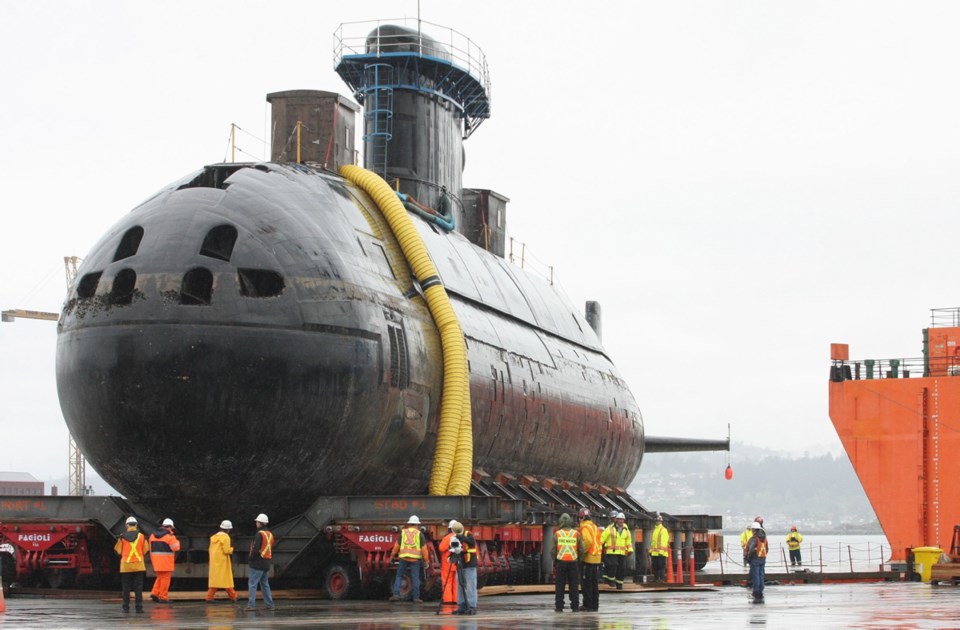A commentary by an adjunct professor in global affairs at the University of Prince Edward Island and a fellow with the Canadian Global Affairs Institute.
Deficits and debt are spiking, and the pandemic has overwhelmed treasury decisions. But, at some point soon, Ottawa needs to make a decision on whether to acquire a submarine replacement.
It generally takes 15 years to procure new major capital equipment for the Canadian military, and the four existing Victoria-class diesel-electric submarines acquired secondhand from Britain in 1998 have a planned operational life to 2035. Overlaying this is the reality that the two sources of past Canadian sub buys, the British and the Americans, now operate nuclear-only undersea fleets.
Past attempts at Canada going nuclear in the 1964 and 1987 defence white papers revealed that option as too costly and politically contentious. When then-defence minister Peter MacKay floated the idea again in 2011, it met opposition pushback, despite the advantages nuclear subs hold in being able to transit Arctic ice, and was quickly dropped.
Even the price tag of a non-nuclear acquisition deterred the Trudeau government from including a replacement project in its 2017 Strong, Secure, Engaged defence policy or the National Shipbuilding Strategy, a multi-decade attempt to provide the Navy and coast guard with built-in-Canada vessels. Instead, the government opted for an estimated $2.5-billion modernization project in the mid-2020s to keep the Victorias going to 2035.
With no options for new or even second-hand buys from our two closest allies, consideration will have to turn to one of three options, one of which is to build overseas, preferably in collaboration with a country with similar requirements like Australia or Japan, or to build at home using one of the National Shipbuilding Strategy yards.
Neither will be cheap. A 2003 Department of National Defence audit picked a $3-billion to $5-billion price tag for four brand new subs. That was 17 years ago. Of course, Ottawa could scrap the 100-year-old submarine service entirely as Denmark did in 2004 once the best-before date passes.
However, going the Danish route would result in the loss of a vital capability that, by its very nature, is unknown to most Canadians. Subs, after all, work best when they are out of sight.
What is known though are the headlines: the tragic 2004 fire aboard the HMCS Chicoutimi, the 2002 flooding in the HMCS Corner Brook and its grounding in 2011. Despite being purchased in 1998, years of sitting mothballed in British waters, the need to restart spare-part supply lines and to “Canadianize” the subs to our navy’s operational standards meant that Victorias did not achieve full operational status until 2015. This year, it emerged that not one of the four subs actually went to sea in 2019 due to maintenance and repair issues.
Yet beneath the surface, there is much to consider in renewing the capability. Canada’s submarines, current and past, have provided our decision-makers with vital functions that few other countries possess. Submarines are known popularly for their weapons, but it is the combination of their very presence and intelligence and surveillance capabilities, including the ability to loiter for weeks undetected, that are their greatest assets.
For a country with the world’s longest coastline, bordering three oceans, submarines have proved instrumental in upholding Canadian sovereignty and strengthening critical alliances.
A mere “notice of intention” to deploy an Oberon-class submarine altered the political calculus of Spain during the 1995 “Turbot War” off Newfoundland in Ottawa’s favour. The Victorias regularly deploy to the Arctic during the summer months for covert surveillance missions. In the Caribbean, these subs participate in anti-drug monitoring.
Further afield are the 100-day-plus missions in 2017-18 in the Mediterranean and East Asia. Working with NATO and Japanese allies, respectively, the subs were involved in training, counter-smuggling and counter-terrorism operations.
In an attempt to boost familiarity with a complex and tense region, the Pacific deployment represented the first time a Canadian sub had deployed to Japan in 50 years. Tellingly, the subs are also up for consideration for deployment to monitor the enforcement of UN sanctions against North Korea.
Even before the onset of COVID-19, the Indo-Pacific was the scene of a naval arms buildup between major regional players, China, Japan, South Korea, India and Australia. Now, factor in the worsening tensions between Beijing and Washington.
With Canada looking to uphold multilateral security norms and diversify trade relations, helping secure our own waters and those of allies will become more important, not less in the years ahead. Now is the time to consider a future replacement — a lot happens in 15 years.
- - -
To comment on this article, send a letter to the editor.
• Email: letters@timescolonist.com
• Mail: Letters to the editor, Times Colonist, 2621 Douglas St., Victoria, B.C. V8T 4M2.
Letters should be no longer than 250 words and may be edited for length, legality or clarity. Avoid emailing your letter as an attachment. Please include contact information; we require your first and last name and the municipality where you live for the letter to be considered for publication.



